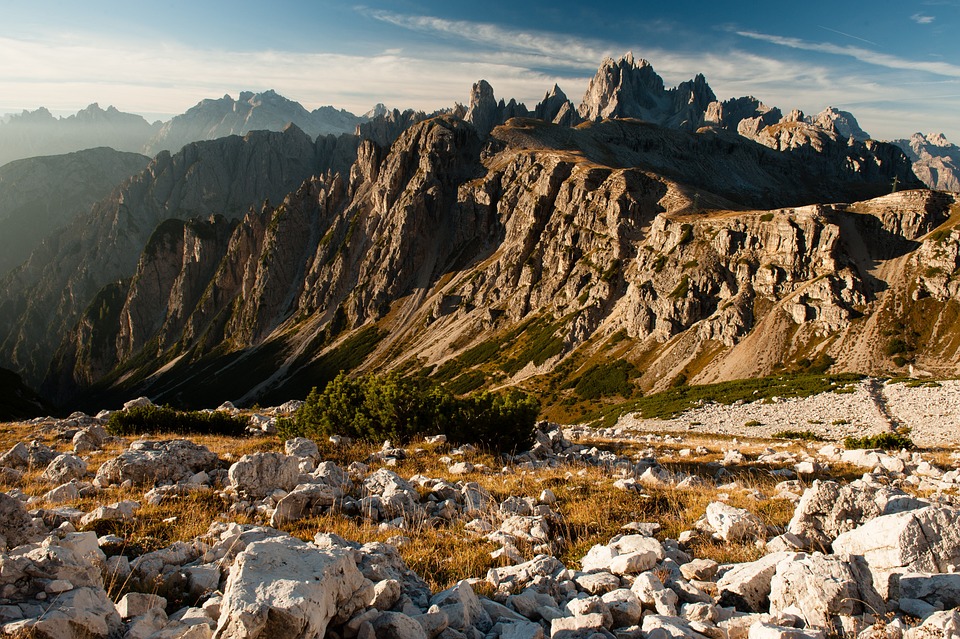Meteora, one of Greece's most spectacular natural and spiritual treasures, is located between the town of Kalambaka and the village Kastraki on the north-western edge Thessalian plains. This unique set of monasteries, built on the tops of huge rock towers, was 1988 inscribed on the UNESCO World Heritage List.
It combines natural beauty, architectural wonder and deep spiritual significancewhich attracts pilgrims and tourists from all over the world.
Photo: Lukáš Hanzl author
How Meteora rock formations were formed
The imposing rocks on which the monasteries now stand form sandstone and stoneswhich was formed over millions of years from the sediments of mud and sand. Approximately 60 million years ago geological shifts have occurred that they've picked up the seabed and formed a high plateau with many vertical faults.
Subsequent weathering by wind, water and temperature changes formed these extraordinary rock towers, which today reach heights of up to 400 metres.
Theopetra Cave - traces of the oldest inhabitants
Just 4 km from Kalambaka is located Theopetra Cavewhere archaeologists have discovered evidence of the presence of people as old as 50 000 years. The cave, now inaccessible to the public, is one of the most important archaeological sites in Greece.
It documents two key transitions in human history:
-
the transition from Neanderthals to modern humans,
-
and later transition from hunters and gatherers to farmers in the Neolithic period.
Author Lukáš Hanzl
Birth of the Meteora Monasteries
On the cliffs of Meteora, the first ascetic hermits settled already in 9th century AD.. They lived in caves and rock crevices and met only on Sundays for communal prayers at the chapel. Dupiani.
A few centuries later, in the time of 11th-12th century, the first monastic community called the Skete of Stagoi, the centre of which was the church Theotokos (Mother of God)which still stands today.
Photo: Lukáš Hanzl author
The heyday of Meteora in the 14th century
The true flowering of monastic life took place in 14th centurywhen a monk comes to the area Athanasios Koinovitis, known as Athanasios Meteorite. Together with his pupils he founded between the years 1356-1372 the largest monastery - The Great Meteoron (Megalo Meteoro), also called the "Monastery of the Transfiguration of the Lord".
The monasteries offered monks safe haven from frequent by Turkish raids, and access to them was originally possible ladders or lifting nets only.
Six Meteora monasteries open to the public
From the original 24 monasteries has survived to this day six activewhich are open to tourists and pilgrims:
-
The Great Meteoron - the oldest and largest monastery, founded in 1356
-
Varlaam - converted in 1961 into a women's convent
-
Saint Nicholas Anapausas
-
Rousanou (Roussanou)
-
Holy Trinity (Agia Triada)
-
Saint Stephen (Agios Stefanos)
Each of these monasteries has its own unique charm - magnificent frescoes, a small museum or breathtaking views of the countryside Pindus Mountains and the river Pineios.
Journey to Meteora today
Thanks stairs carved into the rock in the 1920s access to most monasteries today is easy. Many are open daily (except Mondays or Tuesdays, depending on the schedule) and require appropriate clothing - women should wear covered shoulders and skirts, men long trousers.
Surrounding the city of Kalambaka and the village Kastraki offer accommodation, restaurants and sightseeing routes. The most beautiful views open up at sunsetwhen the rocks of Meteora turn golden.
Meteora as a symbol of spiritual power
Meteora, which in Greek means "floating in the air", is a place where nature and faith combine in a unique harmony. Steep rock walls, History dating back thousands of years and the tranquility that prevails here makes it one of the the most sacred places of Greece and at the same time a must for every traveller.
Sources:
https://zemesveta.cz/meteora/
https://whc.unesco.org/en/list/455/
https://www.fischer.cz/recko/chalkidiki/zajimava-mista/meteora
https://www.nationalgeographic.cz/cestovani/recko-meteora-klastery-mezi-nebem-a-zemi/?
https://en.wikipedia.org/wiki/Meteora





